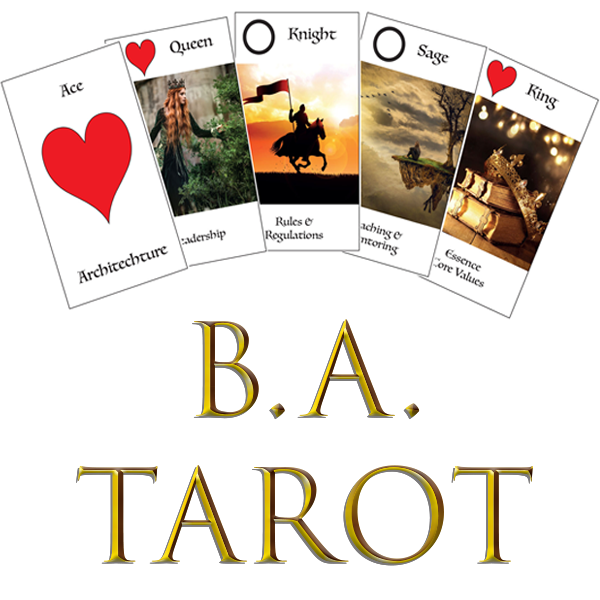
Clubs: Cunning

The Clubs suit focusses on Cunning (strategy).
Strategy originates from military techniques (much like the 6 functions of these cards). The word originates from Greek “Strategos” meaning the general or “Strategon Sophia”, The Generals Knowledge or wisdom. Strategy and tactics are usually intertwined. Strategy is how generally to achieve a goal while tactics are how specifically to achieve a goal.
Strategy is an action that managers take to attain one or more of the organisation’s goals. In IOS 9001 Strategy is defined as
“A general direction set for the company and its various components to achieve a desired state in the future. Strategy results from the detailed strategic planning process”.
Strategic goals are set within the Hearts suit – by the vision, culture and leadership. Implementing strategy is what the Clubs suit represents. Generally strategy in this context is the process of planning and prioritising. Deciding what to do first in order to create maximum effect on the business. A strategic approach to all projects will help deliver on time and aligned to the business goals.
Strategy can be oriented towards each of the POPIT elements “People, Process, Organisation and IT”. I have also added Territory (see knight) and Time (King) to this. Here are 5 steps to build a strategy.
- Build on the vision. (Hearts)
- Focus on the most critical objectives.(Queen of Clubs)
- Plan the attack, choose the battlefield (Knight of Clubs)
- Verify or test the model (protection Knight of diamonds)
- Connect tactics together to create a strategic framework (the hoW card or Sage of Clubs)
This card is still Cunning (strategy) in the V3.0 versions.
On the reverse of the card are:
- Alignment (and consensus)
- Design
- Definition and communication
- Empowerment (and sponsorship)
- Metrics
- Business case (Reason)
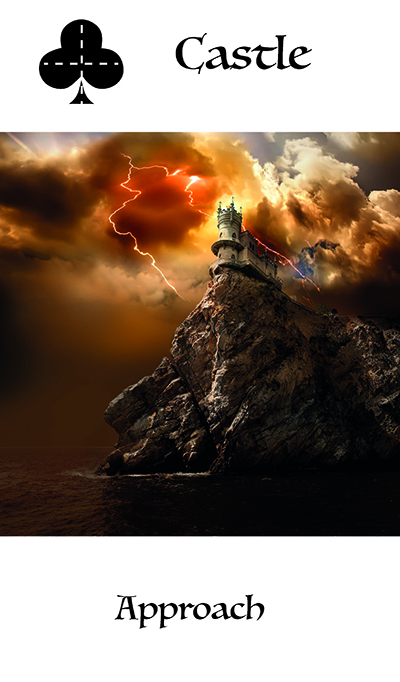
The Castle: Approach
The Castle represents the overall approach, not just Agile/ Waterfall etc. but the context that was identified using the Ace of Hearts card (Architecture).
There are many ways of defining an approach. Internally Driven, Market Driven or Customer Driven.
Within these approaches there are styles of approach Collaborative, Ad hoc, Administrative and Unilateral are four styles often used to describe
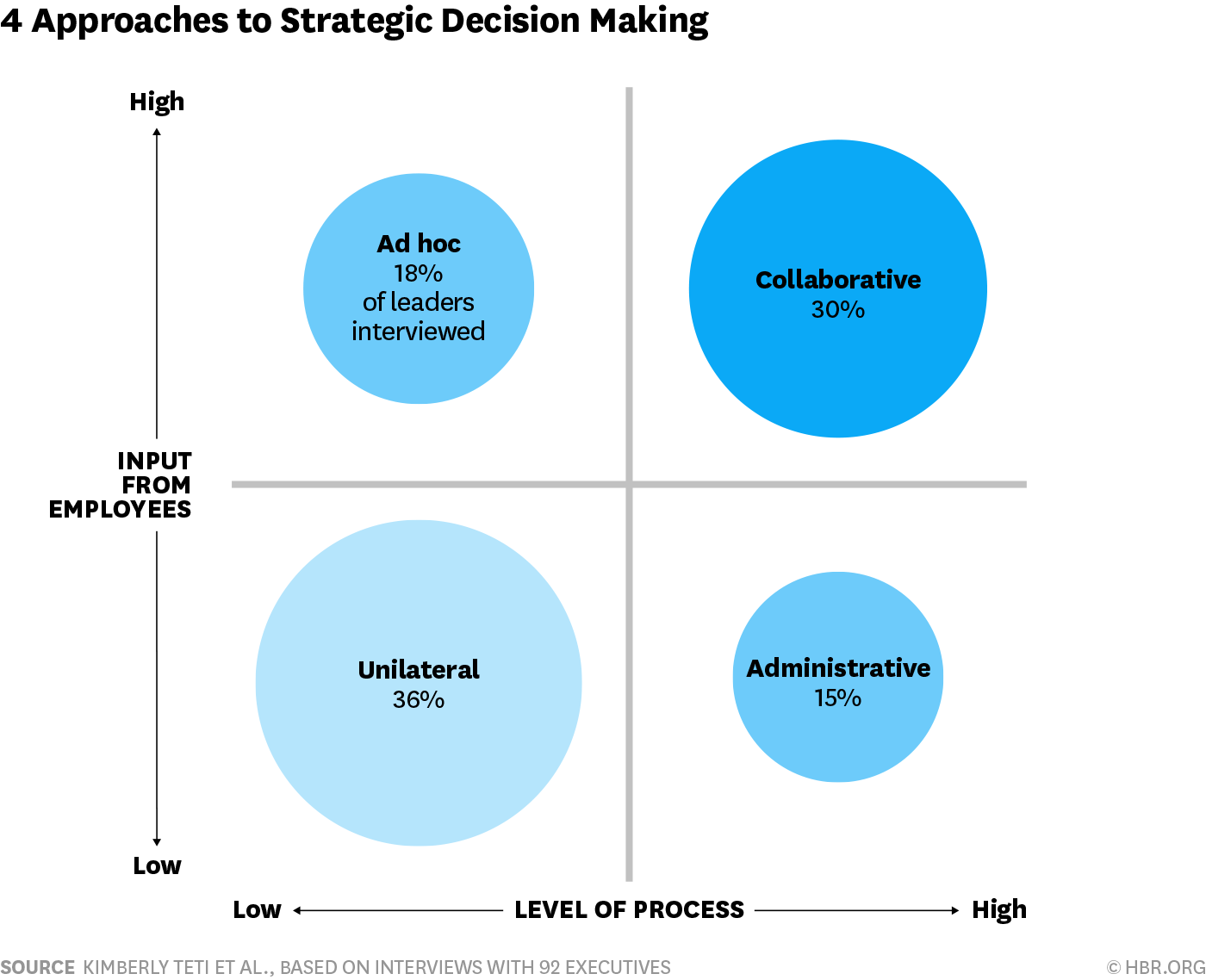
As with many cards in this deck how you choose to use this card will depend on the situation you are investigating and the person or people you are reading the cards with. Needless to say defining your approach and getting consensus on the approach sets the foundation to strategy.
This card is still Approach in the V3.0 versions.
On the reverse of the card are:
- Planned approach
- Strengths and weakness approach
- Reactive approach
- Positioning approach
- Resource based approach
- Style (ad-hock, collaborative, unilateral, administrative)
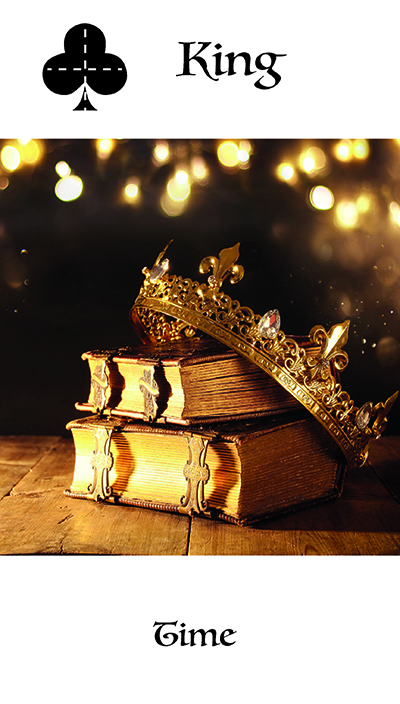
The King: Time
 This card was going to have an illustration of Cnut the Great on it, (left). King Cnut or Canute (I can see why they changed his name) tried to stop the passage of the tide. Like the tide, Time is an un-moveable constant that must be considered when developing strategy or a project, it should be the first consideration before any actions are planned. Time was the main reason that Agile methodology was created as other approaches were too timely and time IS money in business.
This card was going to have an illustration of Cnut the Great on it, (left). King Cnut or Canute (I can see why they changed his name) tried to stop the passage of the tide. Like the tide, Time is an un-moveable constant that must be considered when developing strategy or a project, it should be the first consideration before any actions are planned. Time was the main reason that Agile methodology was created as other approaches were too timely and time IS money in business.
Time management can be broken into for sub categories
- Planning
- Scheduling
- Monitoring
- Control
Planning can exist without scheduling, monitoring and control, Scheduling can exist without monitoring or control, but not without planning, Monitoring can exist without control, but not without planning and scheduling and finally control must be preceded by planning, scheduling and monitoring.
The time card is useful in workshops to keep everyone aware of the time bound aspect of any project.
This card is still Time in the V3.0 versions.
On the reverse of the card are:
- People time (man (woman)/hours)
- Calendar time
- Cost of time
- Opportunity time (first mover advantage)
- Time to act (procrastination)
- The value of Time

The Queen: Priority
I have stolen this quote from Harvard Business Review as it encompasses the meaning of this card.
“Every organisation needs a hierarchy of purpose.
Without one, it is almost impossible to prioritise effectively”
You cant do everything at once and you shouldn’t try. Prioritising increases the success rates of strategic projects, increases the alignment and focus of senior management teams around strategic goals, clears all doubts for the operational teams when faced with decisions, and, most important, builds an execution mindset and culture.
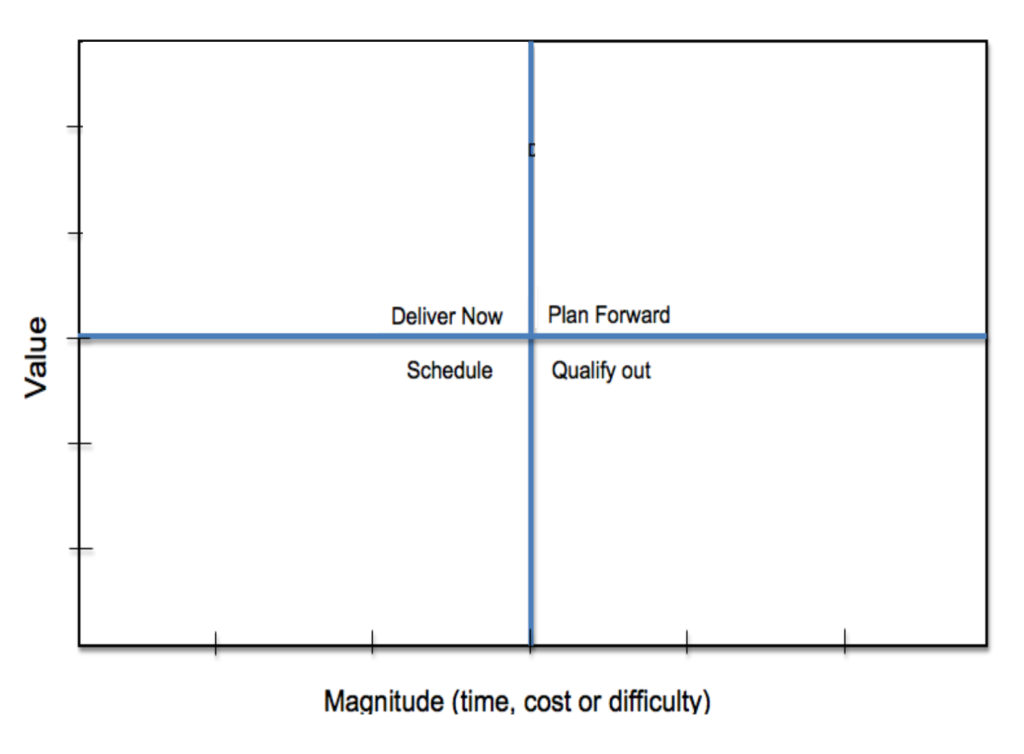
For many years I have used this prioritisation quadrant (and I am sure many of you use similar). Across the X axis is “magnitude” – Representing time, cost or difficulty and the Y axis is “value” by positioning initiatives or actions on this quadrant it is easy to develop a prioritised action list.
This card is still Priority in the V3.0 versions.
On the reverse of the card are:
- Value
- Capabilities
- Magnitude (time, cost, difficulty)
- Opportunity/ threat
- MOSCOW (must have, should have, could have, wont have)
- Document and communicate

The Joker: Change
Change is important for any organisation because, without change, businesses would lose their competitive edge and fail to meet the ever-changing needs of customers. To quote Benjamin Franklin ” When you have finished changing, you’re finished.”
As Business Analysts, we are usually dubbed as “Change Agents” Steven P. Blais defined the Change Agent role as
“The business analyst is explicitly or implicitly responsible for the successful adoption of changed processes, products, and technologies in the organisation… as a business analyst, you have to understand the business community and its ability to absorb the change.”
The main point here is “the ability of absorb the change”, As business analysts we have to understand an organisations ability or willingness to change. Every organisation can absorb different amounts of change due to many factors like: culture, trust, management style (Conduct), Time pressures, (There are cards representing all these factors)
By understanding the change that is required, its effect and impact will help to manage appropriate change within the organisation.
This card is still Change in the V3.0 versions.
On the reverse of the card are:
- Why change?
- Communication and training
- Buy-in (sponsorship)
- Gap analysis (as is – to be)
- Deployment (big bang, phased, parallel, prototype)
- Risk and contingency
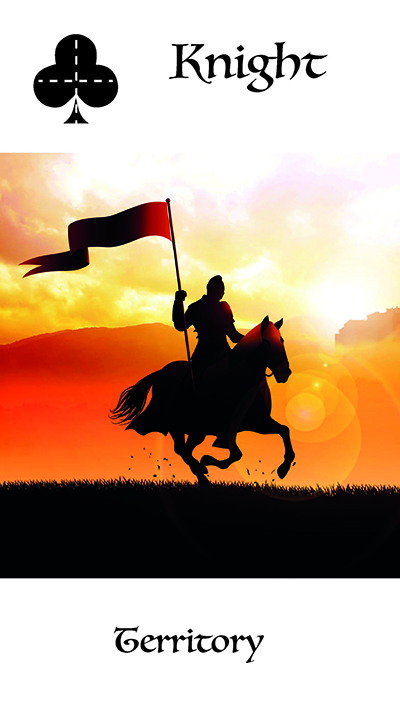
The Knight: Territory
The battlefield has been described as “a place where ideals and loyalties are put to the test”
When considering strategy it is wise to choose your battlefield and then to understand the domain that you have chosen and plan the attack well. Business Strategy is founded in Military strategy indeed the principals of all these cards are from military strategy (see Background)
The territory card represents two aspects of strategy in business:
- Product and services territory – How your product or services competes with others and the range that all of your products cover – You can choose new territories with new product or services. How you manage and review your portfolio of products (Castle of Diamond) and protect them (Knight of Diamonds). This represents the specifics of the product range.
- The territory other that you choose is to migrate these products and services to new battlegrounds. These markets could be Geographic, Demographic or even Psycho-graphic (different emotional states – like when people are happy/ Sad etc).
Businesses can grow their business by either growing their product territory or their geographic territory.
The card can also be used for looking at individual territories – For sales teams, responsibility territories etc.
The Original Territory has been replaced with Scope in the V3.0 versions – this enables the cards to be more useful when looking at a project but scope can still be used when looking at an organisation – The scope of areas that the business operates.
On the reverse of the card are:
- Stakeholders (especially SME’s)
- Actors (including supply chain)
- Requirements / acceptance criteria
- Breakdown
- Validate (document the validation)
- Responsibilities
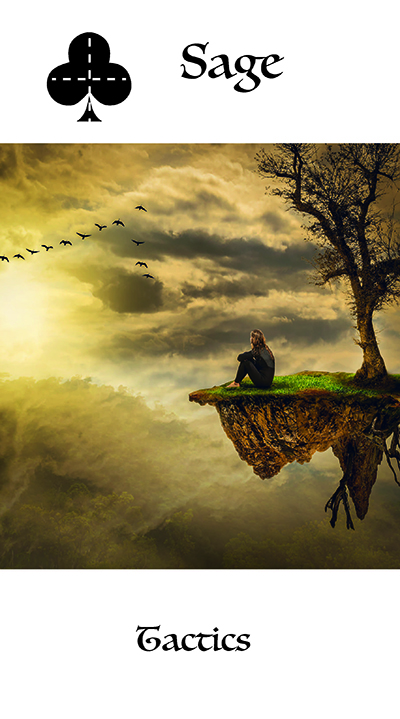
The Sage: Tactics
Tactics are small actionable actions that contribute towards the overall strategic goal. By establishing even the smallest “stepping stones ” towards the goal is something that everyone in the organisation can contribute towards.
In practice, tactics are often plans that address gaps in strategy. Strategy setting happens at a high level where details are often missed. Tactics should happen at every level and ultimately fill in the gaps in the strategy. Here are some other components of Tactics:
- Tactics take advantage of opportunities as they develop
- Tactics manage risks as they are identified
- Tactics are quick
- Tactics are less formal than strategies
- Tactics are planned by those closest to the action
- Ideally, tactics align with strategies, best practices, principles and ethics
Note of caution: Tactics are more obvious to competitors than strategies as they are more visible to the outside world- “All men can see these tactics whereby I conquer, but what none can see is the strategy out of which victory is evolved.” ~ Sun Tzu
This card is still Tactics in the V3.0 versions.
On the reverse of the card are:
- Order (the art of arrangement)
- Short term goals
- Logistics (who, what when, why, where and how)
- Anticipatory vs responsive
- Disruptive tactics
On the reverse of the original cards:
On the reverse: of the Clubs are P E S T L E elements.
Political
Economic
Socio Economic
Technical
Legal
Environmental
I find this useful in workshops when considering external influences using P E S T L E.
